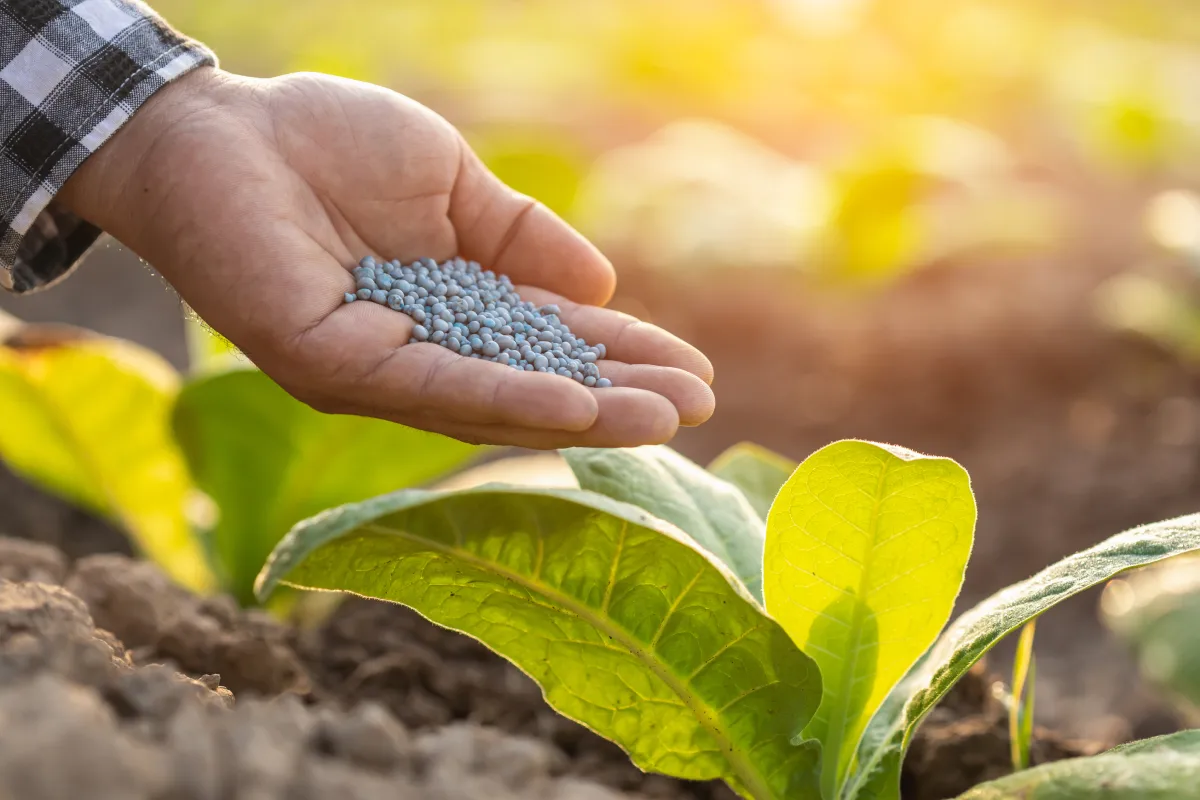The Great Fertilizer Debate: Understanding Your Options
Across Pakistan, Afghanistan, and Syria, farmers are grappling with declining soil fertility and the rising costs of agricultural inputs. The choice between organic and synthetic fertilizers isn't just about immediate crop yields—it's about long-term soil health, environmental impact, and economic sustainability.
Let's start with a clear comparison of both options:
Organic Fertilizers
Definition: Natural materials derived from plant, animal, or mineral sources that release nutrients slowly as they decompose.
Common Types:
- Compost and manure
- Bone meal and blood meal
- Green manure crops
- Vermicompost
- Bio-fertilizers
Key Benefits:
- Improves soil structure and water retention
- Enhances microbial activity
- Slow-release nutrients prevent leaching
- Environmentally sustainable
- Builds long-term soil fertility
Synthetic Fertilizers
Definition: Chemically manufactured compounds with specific nutrient ratios designed for immediate plant uptake.
Common Types:
- Urea (46-0-0)
- DAP (18-46-0)
- NPK compounds
- Ammonium sulfate
- Potassium chloride
Key Benefits:
- Immediate nutrient availability
- Precise nutrient control
- Higher concentration per unit
- Easier storage and application
- Predictable results

While synthetic fertilizers appear more expensive per bag, their higher nutrient concentration often makes them more cost-effective per unit of nutrient delivered. However, organic fertilizers provide additional benefits like soil improvement that aren't reflected in simple price comparisons.
Regional Recommendations by Country
Different regions require different approaches based on soil conditions, climate, and farming practices:

Recommended Approach: 70% synthetic + 30% organic blend
Best Options: Urea for wheat/rice, DAP for cotton, with seasonal compost application
Government Support: Subsidies available for both synthetic and organic inputs
Recommended Approach: 50% synthetic + 50% organic
Best Options: NPK compounds for fruits, traditional manure systems for cereals
Special Consideration: Focus on locally available organic materials

Recommended Approach: 60% organic + 40% synthetic
Best Options: Compost for soil rehabilitation, targeted synthetic for specific deficiencies
Priority: Soil restoration and organic matter building
Environmental Impact: The Long-Term View
The environmental consequences of fertilizer choice extend far beyond your farm boundaries:
Excessive use of synthetic fertilizers can lead to groundwater contamination, soil acidification, and greenhouse gas emissions. In Pakistan's Punjab region, nitrate levels in groundwater have exceeded safe limits in many agricultural areas due to overuse of urea.
Organic fertilizers improve soil carbon sequestration, enhance biodiversity, and reduce chemical runoff. Syrian farmers using compost have reported 25% better water retention in their soils, crucial in drought-prone regions.
Practical Decision-Making Guide
Use this simple flowchart to determine the best approach for your specific situation:
Assess Your Soil
Test your soil for nutrient levels, pH, and organic matter content. Most agricultural extension offices offer affordable testing services.
Consider Your Crops
High-value vegetables may justify premium organic inputs, while staple cereals often benefit from cost-effective synthetics.
Evaluate Resources
Do you have access to animal manure or composting materials? Can you afford the higher upfront cost of synthetics?
Think Long-Term
Consider a phased approach: use synthetics for immediate needs while building soil health with organics for future seasons.
Success Stories from Regional Farmers
Muhammad from Sindh, Pakistan
"I switched from pure urea to a combination of 70% urea and 30% compost for my wheat fields. My yields increased by 15% and I'm using 20% less water because the soil holds moisture better. The compost cost is offset by reduced urea purchases."
Zahra from Nangarhar, Afghanistan
"For my almond orchard, I use sheep manure in winter and targeted NPK applications during the growing season. My trees are healthier, and I've reduced chemical costs by 40% while maintaining excellent yields."
Hassan from Hama, Syria
"After the conflicts damaged our soils, we focused on rebuilding with compost and green manure. Now we use minimal synthetic fertilizers only for specific nutrient deficiencies. Our soil organic matter has doubled in three years."
The Integrated Approach: Best of Both Worlds
Most successful farmers in our region are moving toward integrated nutrient management rather than choosing one approach exclusively:
- Base Nutrition: Build soil health with organic matter
- Targeted Supplementation: Use synthetics for specific nutrient deficiencies
- Seasonal Adjustment: Increase organic inputs before planting, use synthetics during peak growth
- Monitoring: Regular soil testing to guide application rates
Farmers using integrated approaches report 10-25% higher net profits compared to those using only synthetic or only organic methods. The combination reduces input costs while maintaining or increasing yields.
Getting Started: Your Action Plan
Ready to optimize your fertilizer strategy? Here's a practical starting point:
- This Season: Conduct a soil test and identify one organic input you can incorporate
- Next Season: Reduce synthetic application by 10-20% and replace with organic equivalents
- Long-Term: Develop a 3-year soil building plan with increasing organic matter targets
- Continuous: Monitor results and adjust your approach based on crop performance and soil health
Conclusion: Beyond the Either/Or Choice
The debate between organic and synthetic fertilizers often creates unnecessary polarization. The reality is that both have important roles in modern agriculture, especially in the challenging growing conditions of Pakistan, Afghanistan, and Syria.
The most successful farmers aren't those who choose one approach exclusively, but those who understand how to integrate both for maximum benefit. By building soil health with organic inputs while using synthetic fertilizers strategically to address specific nutrient needs, you can achieve sustainable productivity that benefits both your farm and the environment.
Farmer Group offers personalized soil testing and fertilizer recommendation services tailored to your specific crops and regional conditions. Contact our soil experts for a customized nutrient management plan.
